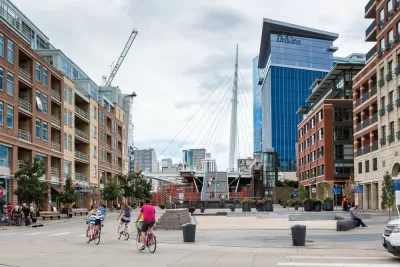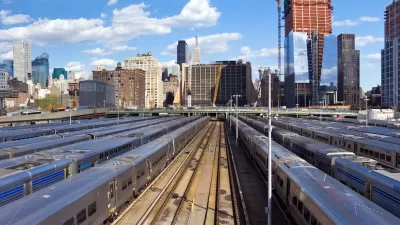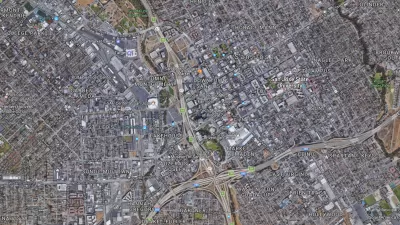Low-income residents are more likely to use transit, and transit needs riders. The relationship seems ripe for mutual benefit.

Eleni Bardaka, an assistant professor at North Carolina State University, and John Hersey, a senior TOD associate of the Regional Transportation District (RTD) in Denver, write a guest post for Transit Center to share survey research exploring the travel habits of people who live near transit.
"Bardaka and Hersey’s work confirms that low-income housing residents use transit a lot more than market-rate residents, reinforcing the case for affordability in transit-oriented developments," according the introductory text supplementing the guest post.
In the words of Bardaka and Hersey:
Transit systems provide users with a ladder to economic opportunity, connecting individuals to home, work, education, healthcare, and myriad metropolitan destinations. This ladder is most critical to low-income, transit-reliant households with little means to afford auto-oriented lifestyles.
The need to state these housing and mobility facts becomes more and more pressing as more and more transit-rich cities become homogeneously affluent cities, according to the article.
Without equitable planning and policies in place, major transit investment can generate new demand for development in areas that quickly transition from economic afterthoughts to high-end enclaves of housing, retail, and offices catering to higher-income earners while leaving behind low-income households who could most benefit from improved transit access. Transit agencies may then find themselves the victims of their own expansion, setting in motion a speculative real estate market that delivers high-rent land uses but few new transit riders.
For a model of equitable planning—rather than the model of gentrifying, ridership depleting transit oriented development—the article looks to Denver's eTOD effort that relies on a variety of private and public sector partners and already has a proof of concept in a development at the 38th and Blake Station on the RTD system.
Hat tip to Angie Schmitt for sharing the article.
Previous Planetizen articles on similar subjects:
FULL STORY: Transit-Oriented Development is More Transit-Oriented When It’s Affordable Housing

Planetizen Federal Action Tracker
A weekly monitor of how Trump’s orders and actions are impacting planners and planning in America.

San Francisco's School District Spent $105M To Build Affordable Housing for Teachers — And That's Just the Beginning
SFUSD joins a growing list of school districts using their land holdings to address housing affordability challenges faced by their own employees.

Can We Please Give Communities the Design They Deserve?
Often an afterthought, graphic design impacts everything from how we navigate a city to how we feel about it. One designer argues: the people deserve better.

The EV “Charging Divide” Plaguing Rural America
With “the deck stacked” against rural areas, will the great electric American road trip ever be a reality?

Judge Halts Brooklyn Bike Lane Removal
Lawyers must prove the city was not acting “arbitrarily, capriciously, and illegally” in ordering the hasty removal.

Engineers Gave America's Roads an Almost Failing Grade — Why Aren't We Fixing Them?
With over a trillion dollars spent on roads that are still falling apart, advocates propose a new “fix it first” framework.
Urban Design for Planners 1: Software Tools
This six-course series explores essential urban design concepts using open source software and equips planners with the tools they need to participate fully in the urban design process.
Planning for Universal Design
Learn the tools for implementing Universal Design in planning regulations.
Borough of Carlisle
Smith Gee Studio
City of Camden Redevelopment Agency
City of Astoria
Transportation Research & Education Center (TREC) at Portland State University
City of Camden Redevelopment Agency
Municipality of Princeton (NJ)





























